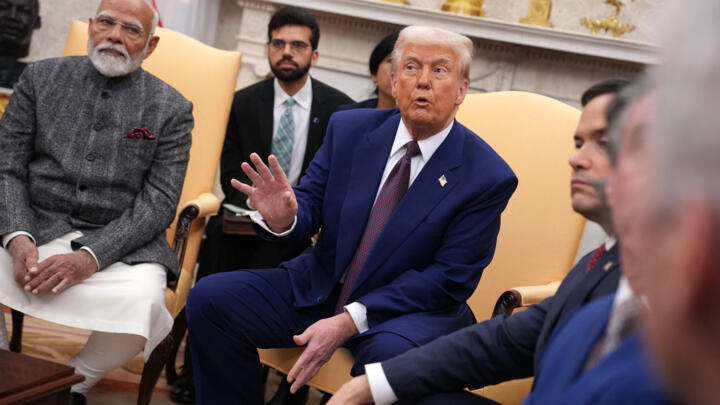Trump Imposes 25% Tariff on India Starting August 1, Adds Unspecified ‘Penalty’ Over Russian Trade Ties
Trump Imposes 25% Tariff on India Starting August 1, Adds Unspecified ‘Penalty’ Over Russian Trade Ties
By
Rachel Steinberg
Last updated:
July 31, 2025
First Published:
August 6, 2025

Photo: France 24
Trump Announces New Tariff Measures on India
President Donald Trump declared on Wednesday that India will face a 25% tariff on imports starting August 1, accompanied by an additional “penalty” related to India’s trade and defense ties with Russia. The exact nature of the penalty remains unspecified by the administration.
Trump’s announcement on his social media platform, Truth Social, criticized India for its “among the highest in the world” tariffs and “obnoxious non-monetary trade barriers,” emphasizing a history of limited bilateral trade despite India being a key partner.
Details Behind the Tariff Decision
This 25% tariff is slightly lower than the 26% initially announced on India’s “liberation day” and fits within the range of 20% to 25% tariffs Trump mentioned earlier this week. However, it remains a significant escalation in trade tensions between the two countries.
Trump also highlighted India’s ongoing purchase of military equipment and energy from Russia, labeling the country as “Russia’s largest buyer” alongside China. He cited this as a key reason for imposing the tariff and penalty, expressing concerns over Russia’s ongoing conflict in Ukraine.
India’s Response and Trade Negotiations
India’s Ministry of Commerce and Industry responded cautiously, stating that the government is “studying” the implications of the tariff announcement. Officials reaffirmed their commitment to ongoing bilateral negotiations aimed at reaching a “fair, balanced and mutually beneficial” trade agreement.
Despite the tariff threat, India has maintained a firm stance on protecting sensitive sectors such as agriculture and resisted demands for expanded market access by the U.S.
Trade Deficit and Economic Context
Trump underscored the U.S.’s “massive trade deficit with India,” framing the tariffs as a tool to address the imbalance. However, economists warn that tariffs may lead to higher prices for American consumers and question whether reshoring low-skilled manufacturing jobs is feasible or beneficial.
Earlier this year, Trump labeled the global trade deficit a national security emergency, enabling unilateral tariff actions without Congressional approval.
Escalating Penalties Linked to Russia
The “penalty” mentioned by Trump ties into his administration’s hardening stance on countries purchasing Russian oil and gas amid the Ukraine war. Trump has threatened 100% secondary tariffs on nations that continue to engage in Russian energy trade unless Moscow agrees to a ceasefire.
Countries heavily reliant on Russian energy—including India, China, and Brazil—stand to be most impacted by such measures, adding another layer of complexity to global trade relations.
Looking Ahead
As the August 1 tariff deadline approaches, both India and the U.S. face mounting pressure to balance national interests, economic cooperation, and geopolitical strategies. With ongoing trade talks and potential penalties looming, the future of U.S.-India trade relations remains uncertain but critically important in the broader Indo-Pacific economic landscape.
Popular articles
Subscribe to unlock premium content
Disney’s Timeless Magic and How the Entertainment Giant Continues to Shape Culture and Innovation

Imran Khan’s Economic Missteps Amid Political Chaos in Pakistan

The Philippines’ Digital Shift How Remittances and BPO Are Fueling Growth

Disney’s Timeless Magic and How the Entertainment Giant Continues to Shape Culture and Innovation

Imran Khan’s Economic Missteps Amid Political Chaos in Pakistan

Disney’s Timeless Magic and How the Entertainment Giant Continues to Shape Culture and Innovation









